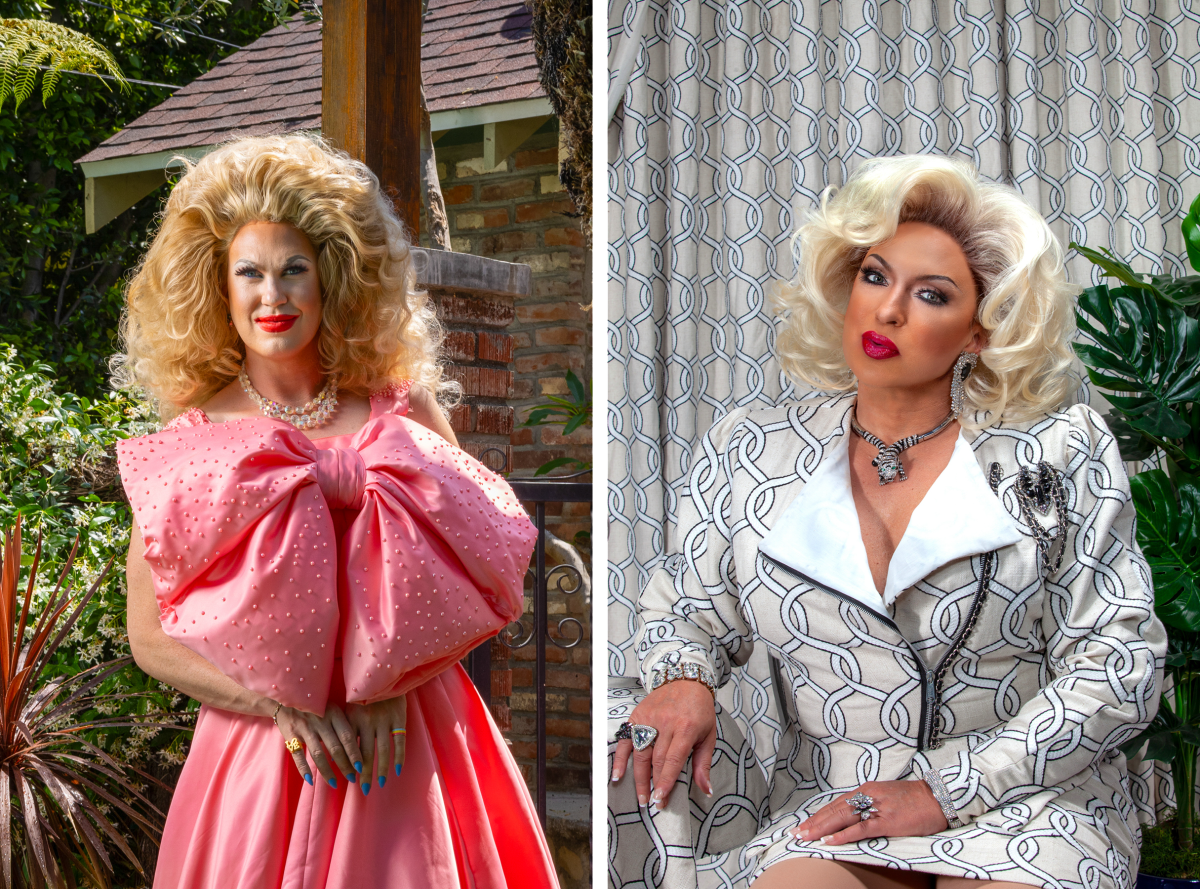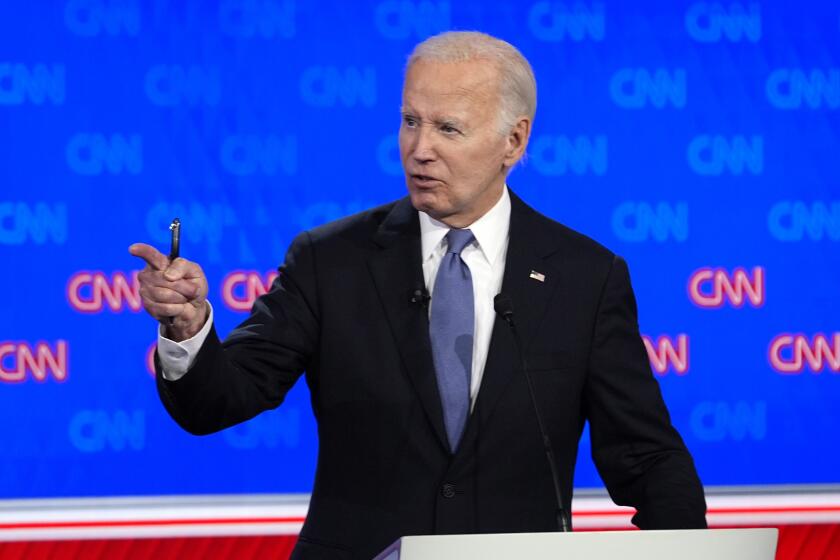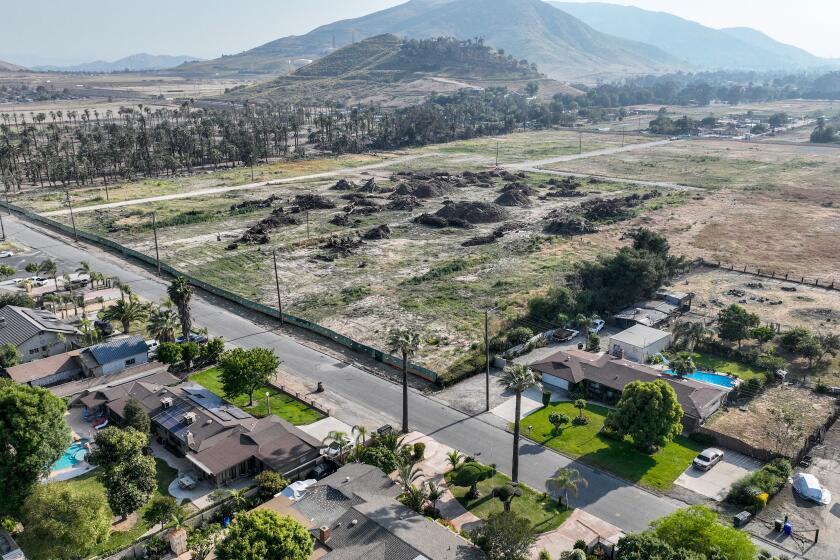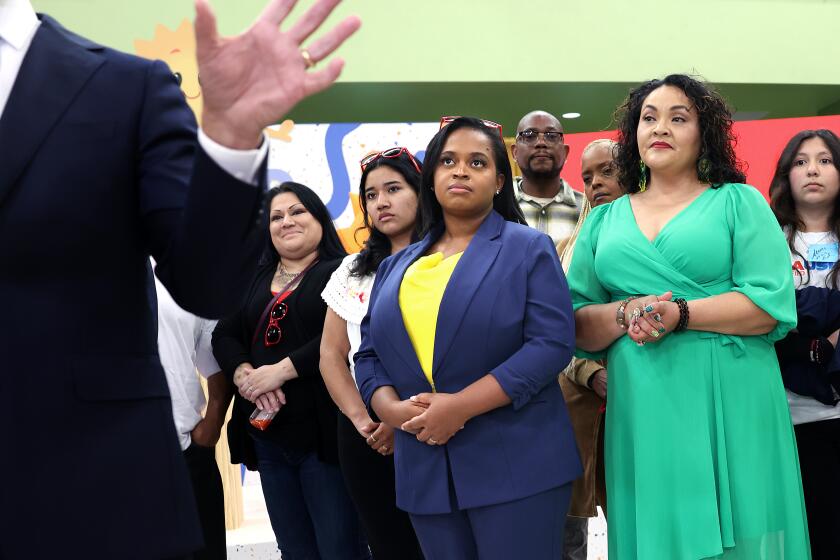Our queerest century: Looking back, and forward, at the LGBTQ+ community’s contributions
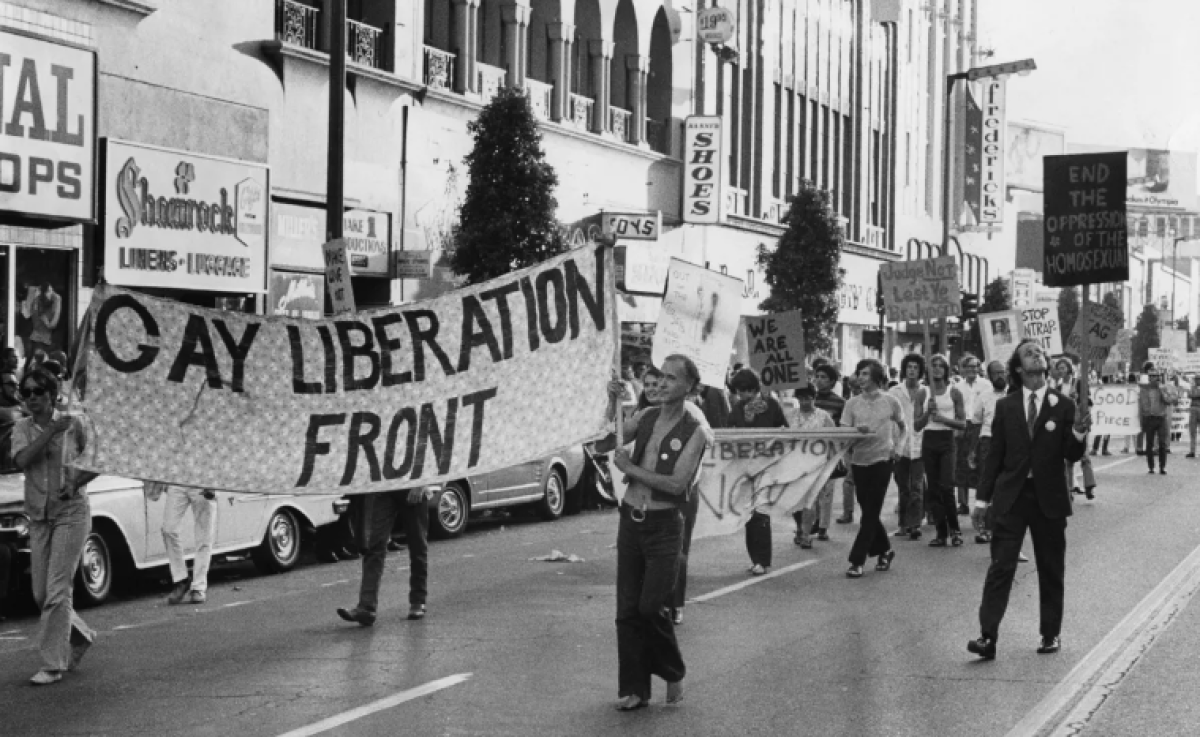
Good morning. It’s Thursday, June 6. I am Defne Karabatur, a fellow at The Times. Here’s what you need to know to start your day.
- The last hundred years have been our queerest century yet, but there’s more work to do.
- Earth breaks heat and CO2 records once again.
- The best West Coast travel spots, according to readers.
- And here’s today’s e-newspaper.
You're reading the Essential California newsletter
Our reporters guide you through our biggest news, features and recommendations every morning
You may occasionally receive promotional content from the Los Angeles Times.
The queerest century ever
A Chicago postal worker named Henry Gerber founded the nation’s first known gay rights organization, Society for Human Rights, a hundred years ago.
Before it could celebrate its first anniversary, Gerber and his associates were arrested on trumped-up charges and subjected to expensive litigation. Gerber escaped a prison sentence but lost everything, including his post office job and life savings.
The backlash Gerber and the Society for Human Rights received echoes today through the ongoing efforts to ban queer books and drag performances and limit conversations surrounding LGBTQ+ issues in public schools.
But the seed they planted helped usher in what has become our country’s queerest century yet. Since 1924, LGBTQ+ people nationwide have carved out queer spaces and communities, contributing tremendously to arts, entertainment, film, law, democracy and more.
Their efforts have shifted American public opinion on LGBTQ+ issues dramatically.

In a 1985 poll conducted by The Times, 72% of American adults said sexual relations between same-sex adults are always or almost always wrong. That percentage dropped to 28% in a new poll conducted on behalf of The Times this year.
“Queer people should not just be accepted but celebrated,” my colleague Kevin Rector wrote in a Times project that explores the queer history of the last hundred years and the exceptional role LGBTQ+ people have played in helping American society progress.
Bobbi Campbell’s leadership in the fight against AIDS, Hollywood representation, Ernestine Eckstein and countless other queer people of color’s activism complete the picture of American history. Today’s queer youth, who cherish their identities unabashedly, represent a future that looks more queer than ever.
But public opinion toward transgender and nonbinary people hasn’t improved at the same rate — even in California, home to the largest queer population in the U.S.
The groundbreaking poll reveals how adults throughout the country feel about LGBTQ+ issues, especially those related to transgender and nonbinary people, today.
In the poll, 67% of respondents said they either somewhat or strongly approve of transgender and nonbinary people living as they wish. But that percentage rose to 80% when asked about gay and lesbian people.
The poll also found that Americans are more likely to support queer people if they know a queer person.
While 72% of respondents said they have had a gay or lesbian relative, friend or co-worker come out to them, far fewer — 27% — said the same about a transgender or nonbinary relative, friend or co-worker.
“Ignorance of LGBTQ+ people remains a major threat,” especially for queer youth, who “constantly hear negative things about being LGBTQ+ and have no access to the queer books” or familial support, Kevin wrote.
More than half of poll respondents said they favor laws to prevent transgender children younger than 18 from receiving gender-affirming care such as surgery or puberty blockers. And approximately 1 in 4 poll respondents said they would be very upset if their child was transgender or nonbinary.
The reality is, the next generation of LGBTQ+ leaders and thinkers “are no longer willing to segment themselves into socially acceptable pieces,” my colleague Jaclyn Cosgrove wrote. Instead, they’re going out and loving the world, the “queerest thing, proudest thing we can do.”
How have your LGBTQ+ friends, family, co-workers and heroes had a positive impact on your life? We want to hear from you. Fill out our survey to let us know.
Read more:
- Poll: Americans approve of LGBTQ+ people living as they wish, but their support drops for trans people
- Poll: The U.S. has caught up to California on views of LGBTQ+ rights
- Essay: We must remember the heroes of the AIDS epidemic, not just the trauma
- Essay: ‘I don’t have to be caged for your happiness’: Why I find hope in today’s queer youth
- Our Queerest Century
Today’s top stories

Climate and environment
- Earth breaks heat and CO2 records once again: ‘Our planet is trying to tell us something.’
- Faster alerts for California megaquakes: Early-warning system gets major upgrade.
- How is climate change affecting heat waves in California and the West?
- Extreme heat forecast for Western U.S. may kick off sweltering summer. Here’s the outlook.
Crime
- A woman in her 70s was stabbed to death in a South Pasadena home; no arrests have been made.
- Thieves are stealing L.A. County fire hydrants by the hundreds. Utility is now trying to outsmart them.
- Lego thefts across Southern California leave police trying to piece together clues.
Housing
- Why California lawmakers are giving up a bid to repeal a nearly 75-year-old anti-public housing measure.
- ‘Who’s going to live here?’ What happens when a warehouse project takes out your neighborhood.
- In Skid Row, a 19-story residential tower for homeless people will offer a gym, a cafe, and an art studio.
More big stories
- Stanford says it will suspend students after officer injured, ‘extensive damage’ done in protest occupation.
- An inmate hung a noose. Jailers were too busy watching ‘explicit video’ to intervene, inspectors say.
- Luxury grocer Erewhon announces its next SoCal store location.
- Positive test not needed for long COVID diagnosis, experts conclude.
- Six inmates and two jailers were hospitalized after ‘toxic substance’ exposure at women’s jail in Lynwood.
- After the trauma of sexual assault comes the healing of ‘Fire and Blue Sky’ at L.A. Opera.
- Ruff gig: L.A. mail carriers lead the nation in dog bites.
- L.A. County offers free beaches and museums for a day as part of reparations efforts.
- Tired and confused, first migrants reach California border after Biden’s asylum order.
- With deadline nearing, Newsom and lawmakers disagree over solutions to California budget crisis.
- The reason L.A. County delayed giving away 200 free food carts? Blame it on tacos.
- California ‘overdue’ for whooping cough outbreak as cases spike across U.S.
Get unlimited access to the Los Angeles Times. Subscribe here.
Commentary and opinions
- Editorial: It’s a shame California voters won’t be able to dump this racist anti-housing policy in November.
- George Skelton: Trump’s pity party maligns America’s real darkest days.
- Jackie Calmes: Which is it? Biden the mastermind or Biden the bungler?
- Anita Chabria: Democrats don’t like the label ‘felon,’ unless it’s for Trump.
Today’s great reads
Who are America’s first drag laureates? Californians ready to fight the war on drag. It’s June and Pride Month is in full swing as LGBTQ+ communities around the world celebrate together as well as commemorate the Stonewall Uprising in New York City in 1969. Two prominent voices — the drag laureates of West Hollywood and San Francisco — are booked and busy. There are wigs to coif, dresses to steam and parties to attend.
Other great reads
- Jesus Trejo goes behind the laugh on new PBS series ‘Roots of Comedy.’
- That time Meryl Streep reached out and said she wanted to work with me.
How can we make this newsletter more useful? Send comments to essentialcalifornia@latimes.com.
For your downtime
Going out
- 🏞️ The best West Coast travel spots, according to readers.
- 🎸The Sotheby’s of classic rock is in Glendale: Inside rock history auction house Analogr.
- 🍽️ Legendary Clifton’s is reopening in a struggling downtown L.A. Its owner hopes crowds return.
Staying in
- 🎥 In ‘Bad Boys: Ride or Die,’ the action party rolls on, vigorously and untroubled.
- 🧑🍳 Here’s a recipe for charred cabbage with hazelnuts & chile butter.
- ✏️ Get our free daily crossword puzzle, sudoku, word search and arcade games.
And finally ... from our archives
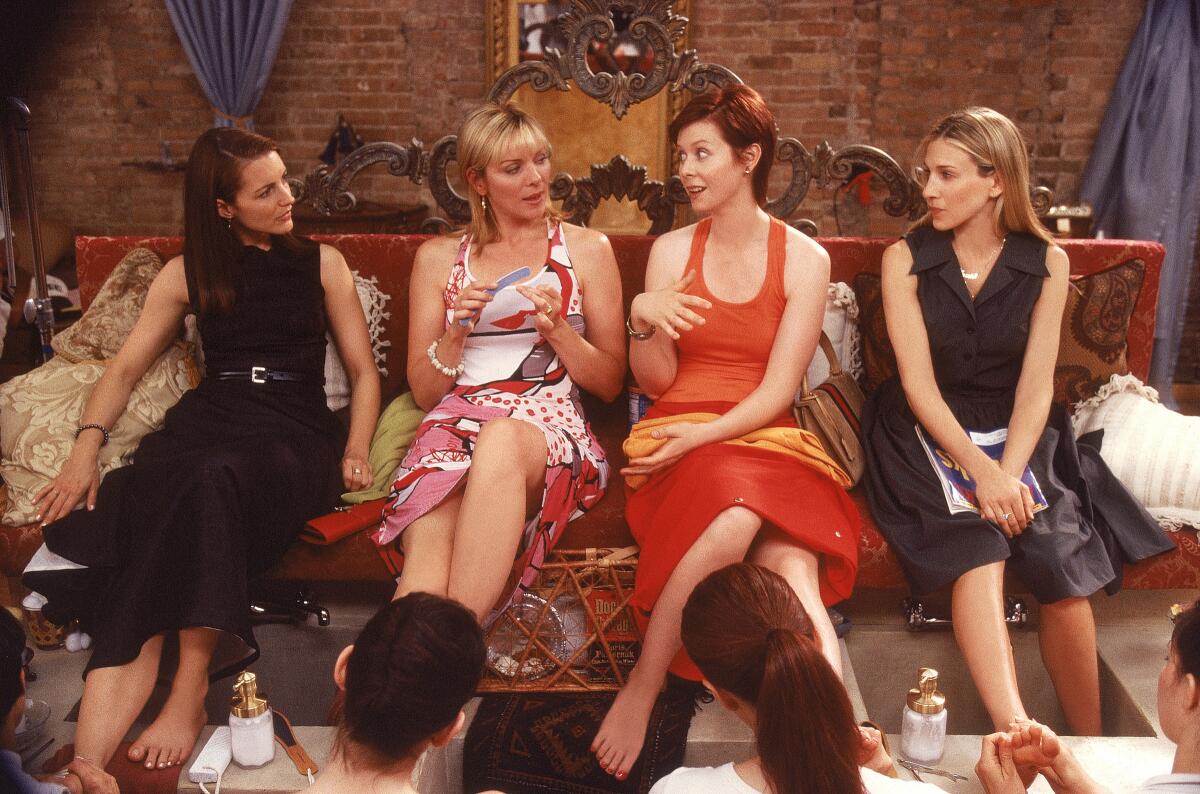
On June 6, 1998, “Sex and the City” began airing on HBO, becoming one of the most popular and influential television series of the late 1990s and early 2000s.
One day before the series premiered, The Times’ Howard Rosenberg wrote about the show’s sophisticated approaches to sex.
Have a great day, from the Essential California team
Defne Karabatur, fellow
Kevinisha Walker, multiplatform editor and Saturday reporter
Christian Orozco, assistant editor
Karim Doumar, head of newsletters
Check our top stories, topics and the latest articles on latimes.com.
Start your day right
Sign up for Essential California for news, features and recommendations from the L.A. Times and beyond in your inbox six days a week.
You may occasionally receive promotional content from the Los Angeles Times.
